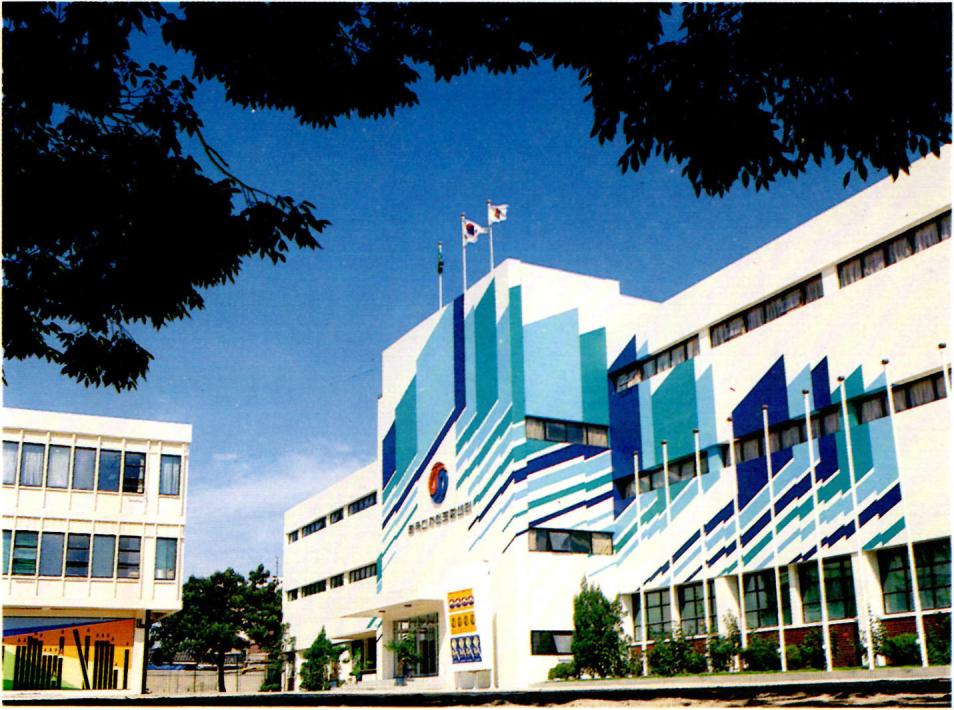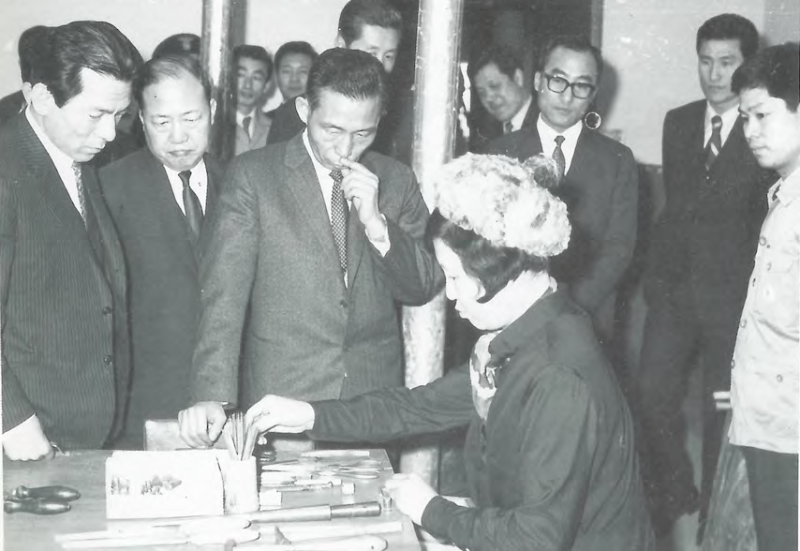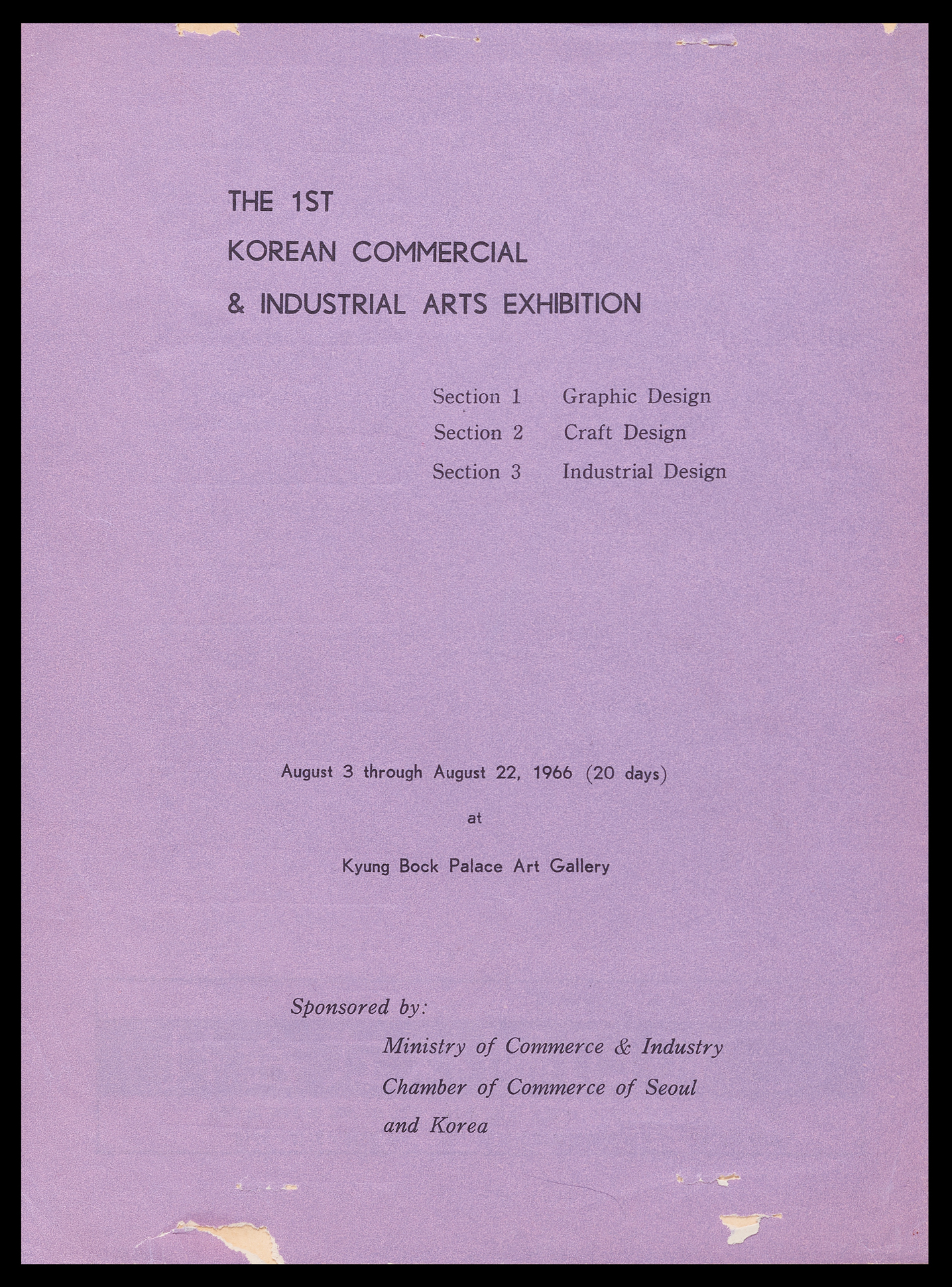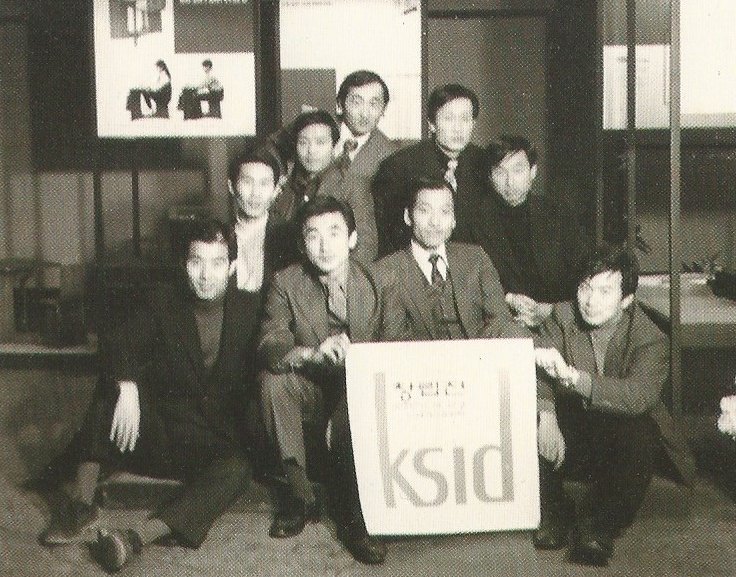
Image Imbeded in Industrial Design 109, 1990, vol.21, p.7
Korea Design and Packaging Center
* Source: MMCA
Related
-

Korea Export Design Center
The Korea Export Design Center (KEDC) is the new name that the Korea Institute of Crafts and Design [Hanguk gongye dijain yeoguso], a corporation that opened in July 1966, acquired in March 1969 through the amendment of its incorporation articles. In September 1965, a decision was made to establish a provisional institute of craft technology during an export expansion meeting held at Cheongwadae (Blue House). In April 1966, the construction of the institute was finalized at 128, Yeongeon-dong, Jongno-gu, Seoul. In July of the same year, the Minister of Commerce and Industry approved the establishment of the institute, and it was officially launched. The first chairman of the board was Park Gapseong, who was the dean of the College of Fine Arts at Seoul National University; the first director was Lee Soonsuk, who was a professor in the College of Fine Arts at Seoul National University; and the rest of its researchers, including the first researcher Bu Sueon, were mostly from the College of Fine Arts at Seoul National University. Around 1969, the Ministry of Commerce and Industry requested the institute to develop designs for export products rather than academic designs. During this process, its name was changed. It was renamed the Korea Design Center (KDC) in February 1969 and the Korea Export Design Center in March 1969. In August 1969, the institute began publishing the magazine Gyegan Dijain (Quarterly Design). The magazine was published four times until Spring 1970. After being renamed the design center, the institute stated that it would “contribute to national economic development by researching and devising scientific and aesthetic designs for new products under the three pillars of “New Idea, New Plan, New Life” and endeavor to serve as the general headquarters for the improvement of design culture.” In May 1970, the Ministry of Commerce and Industry launched the Korea Design and Packaging Center by merging three organizations (the Korea Export Design Center, the Korea Packaging Technology Association, and the Korea Export Goods Packaging Center), which became the Korea Institute of Design Promotion.
-
Cho Youngjae
Cho Youngjae (1935-2019) was a designer and educator who was a pioneer in all areas of graphic design, including corporate identity (CI) design. After graduating from the Applied Arts Department at Seoul National University in 1958, Cho worked at Hwasin Industry and Chohung Bank. He began teaching at his alma mater in 1963, and in 1964 he became a professor in the Living Art Department at Duksung Women’s University. In the following year, he worked again in the Applied Arts Department at Seoul National University. Cho took part in preparing the first Korea Commerce and Industry Art Exhibition (present-day Korea International Design Award) held in 1966. In September 1972, he founded the Korea Society of Graphic Design (KSGD) along with ten other artists including Kim Kyoman and Yang Seungchun and served as its chairman four times (2nd, 3rd, 6th, and 7th). This society was renamed the Korea Society of Visual Design (KSVD) in 1977 and was active until 1993. He also served as the first chairman of the Visual Information Design Association of Korea (VIDAK) established in 1994 and of the Korean Federation of Design Corporations (currently Korean Federation of Design Associations, KFDA) founded in 1995. In 1972, along with fellow professors Min Chulhong and Yang Seungchun, Cho expanded the product label design for OB beer into a corporate identity design project. Later, he developed corporate identities for the Cheil Jedang Corporation (1974), Cheil Industries Inc. (1975), and Shinsegae Department Store (1975) and served as a design advisor for Yonhap Communications, Cheil Worldwide, and Daewoo Electronics. In 1974, he established Cho Design and Research (CDR; currently, CDR Associates), a company specializing in identity design. Kim Seongcheon has been running the company as CEO since 1995. In 1976, Cho held the solo exhibition Design by Cho Youngjae: DECOMAS, through which he introduced the term “Design Coordination as a Management Strategy” (DECOMAS) imported from Japan. In June 1982, he became the chairperson of the design department of the Seoul Olympic Organizing Committee and designed the official Olympic poster and other sports posters.
-

Kim Kyoman
Kim Kyoman (1928-1998) was a graphic designer celebrated for his lyrical illustrations and an educator. After graduating from the Applied Arts Department at the College of Fine Arts of Seoul National University in 1956, he founded KK Design Research Institute along with Kwon Soonhyung at the suggestion of their teacher Chang Louis Pal and operated it until 1958. Later, Kim served as a teacher at Jinmyeong Girls’ High School, Sacred Heart [Seongsim] Girls’ High School, and Seoul Arts High School. He also worked as a designer for advertisements and textile patterns at Eastern Textile Manufacturing from 1960 through 1962. In 1964, he began teaching as a part-time lecturer in the Applied Arts Department at Seoul National University. He became a full-time professor in 1965 and taught students until his retirement in 1994. In September 1972, he founded the Korea Society of Graphic Design (KSGD) together with ten other artists. They are Cho Youngjae, Yang Seungchoon, Lee Taeyeong, Kim Youngki, Hong Jongil, An Jeongeon, Jeong Sihwa, Kwon Myeonggwang, Ryu Jaeu, and Kwon Munung. Kim Kyoman served as the first president of the society. The KSGD was renamed the Korea Society of Visual Design (KSVD) in 1977 and operated until 1993. Among notable works by Kim from the 1970s are the Seoul subway symbol (1974) and total design of Seoul subway lines 3 and 4 (1978). In the early 1980s, he focused on developing identity designs for banks, including Hanil Bank, Housing and Commercial Bank, Industrial Bank of Korea, and Daehan Investment Trust. In 1987, he served as an expert adviser for cultural poster design and environmental decoration for the Seoul Olympic Games. In 1992, he designed the symbol and logotype for the Visit Korea Year in commemoration of the 600th anniversary of Seoul as the capital. His first solo exhibition Kyo Man Kim Visual Communication Design was held in 1976 at the Korean Design Center. Kim held five solo exhibitions until his death, including Rhythm of Korea from 1998, which became his posthumous exhibition, in New York. In 1978, at the age of fifty-one he studied for six months at St. Martin’s School of Art in England. He published two collections of his illustration work: Korean Melody (Dijain yeongusa, 1980) and Graphic 4: Beautiful Korea 86 (Mijinsa, 1986). From 1985 until 1988, he served as president of the Seoul Society of Illustrators (present-day The Korean Society of Illustration Research). In 1993, he was awarded the Dongtap Industrial Medal.
Find More
-

Korean Commercial and Industrial Art Exhibition
The Korean Commercial and Industrial Art Exhibition is a design competition that was first held in August 1966. It was launched “as part of export promotion measures to inspire creativity for excellent designs internally and redeem the backwardness of Korean design externally.” In 1976, it was renamed the Korean Industrial Design Exhibition and in 2007, the Korea International Design Award, which continues to operate as of 2024. Initially, the holding of the exhibition was led by the Ministry of Commerce and Industry, but since the sixth edition in 1971, the Korea Design and Packaging Center (present-day Korea Institute of Design Promotion (KIDP)) has been organizing the exhibition. The first edition held at the Gyeongbokgung Palace Museum in August 1966 featured a total of 241 works consisting of 104 works in the first section of commercial art, 81 works in the second section of craft art, and 56 works in the third section of industrial art. In 1976, the disciplines were changed to visual design, craft design, and industrial design. Since then, the names and disciplines have changed several times. In 2019, the exhibition was divided into seven disciplines: product design, visual communication design, digital media/contents design, space/environmental design, fashion/textile design, service/experience design, and craft design. This disciplines remain in place as of 2024. The 2023 entries totaled 1,933 works with 41 prize winners and 221 honorable mentions.
-

Korea Association of Industrial Designers
The Korea Association of Industrial Designers (Hanguk saneop dijaineo hyeophoe, KAID) is a private association and corporation founded in 1993 with the merger of three organizations involved in industrial design. These three organizations are the Korea Industrial Designers Association (INDDA) affiliated with the Korea Designer’s Council (Hanguk dijaineo hyeopuihoe, KDC) founded in May 1972 at the initiative of Park Daesun, a leading design educator; the Korean Industrial Designers Association (the Korean Society of Industrial Designers (KSID) at the time of its founding) established in June 1972 by Min Chulhong and eight other designers (Lee Sunhyeok, Bu Sueon, Kim Gilhong, An Jongmun, Bae Cheonbeom, Choe Daeseok, Kim Cheolsu, and Min Gyeongu); and the Korean Industrial Design Company Association (KIDCA) founded in 1991. They were merged in August 1993 and launched as the Korea Association of Industrial Designers (KAID). After the merger, An Jongmun became the interim president, and at the board meeting held in April 1994, Bu Sueon was elected as the first president. Shortly after its launch in 1993, the KAID joined the International Council of Societies of Industrial Designers (ICSID, currently World Design Organization, WDO). In 2001, it co-hosted the ICSID 2001 Seoul Congress with the Korea Institute of Design Promotion. In 1997, the KAID established the Korea Industrial Design Award and renamed it as the Pinup Design Award in 2008. In 1999, it formed the Asia Designers Assembly (ADA) together with the Japan Industrial Designer Association (JIDA) and the China Industrial Design Association (CIAD). The assembly continues to this day. In 2011, it launched the Korea Society of Industrial Design (KSID) in order to bridge the gap between the field and academia in the design world.
-

Korean Craft Design Institute
The Korean Craft Design Institute [Hanguk gongye dijain yeonguso] was established on July 26, 1966 to improve design, conduct research on production technology, train technicians in the craft field and promote exports of the craft industry through provision of crafts. It began with the need for a design center that professors led by Lee Soonsuk from the College of Fine Arts at Seoul National University mentioned to the government in the mid-1960s. Accordingly, the institute was founded within the precincts of Seoul National University (currently the International Design School for Advanced Studies at Hongik University in Yeongeon-dong, Jongro-gu, Seoul) with support from the Ministry of Commerce and Industry. The first chairman was Park Gapseong, and the director was Lee Soonsuk. Practical tasks began to be undertaken in 1968, covering the fields of wood-lacquering crafts, ceramics, goldsmithing, weaving, dyeing, industrial art, and commercial art. The Korean Craft Design Institute was the first design promotion organization in South Korea, with the exception of the Korean Handicraft Demonstration Center [Hanguk gongye sibeomso] run by Americans in the 1950s. It was part of the College of Fine Arts of the Seoul National University. However, in actuality, it received interference from the Ministry of Commerce and Industry and was renamed the Korean Export Design Center in 1969. There was a discrepancy between the management team that aimed for a research-oriented institution and the Ministry of Commerce and Industry that sought to make it an export promotion institution. This discrepancy led to its merging with the Korean Packaging Technology Association in 1970. As it was renamed the Korean Design Packaging Center (present-day Korea Institute of Design Promotion), it came to belong to the state.






